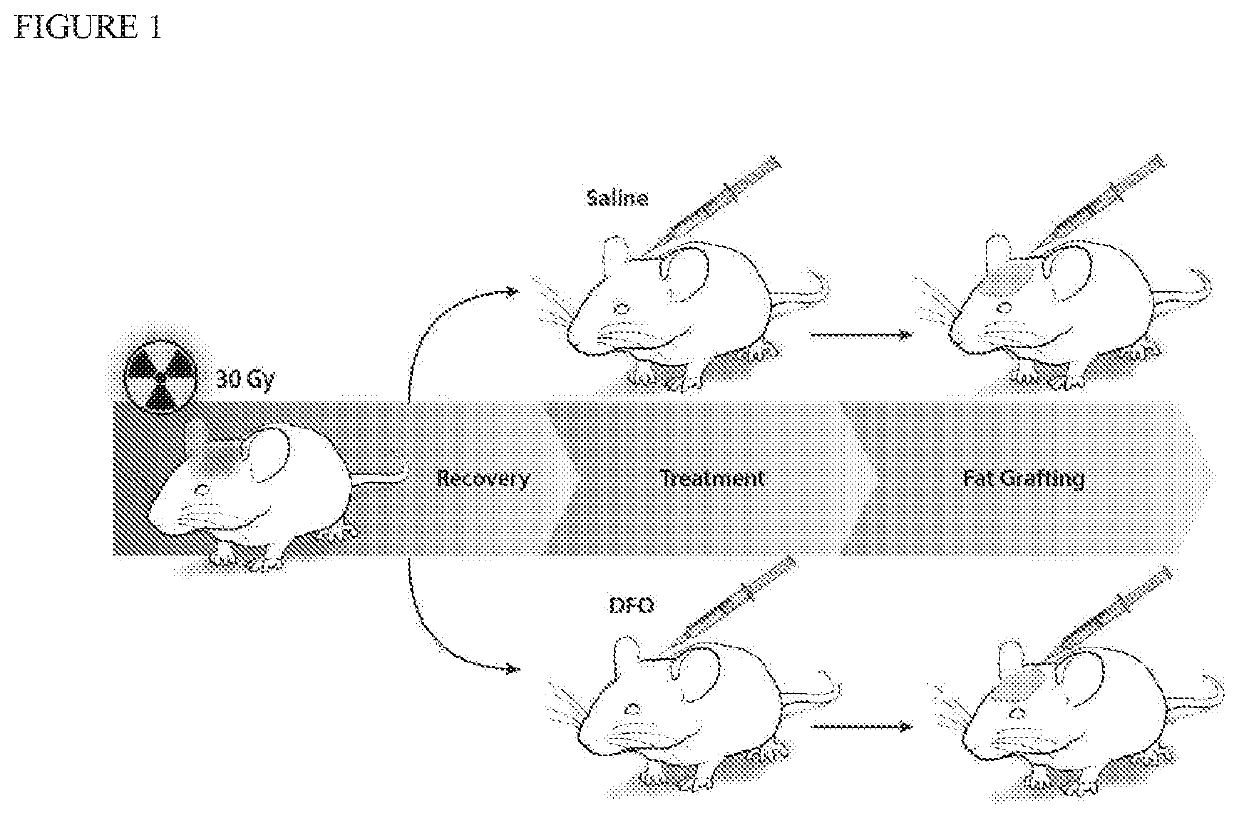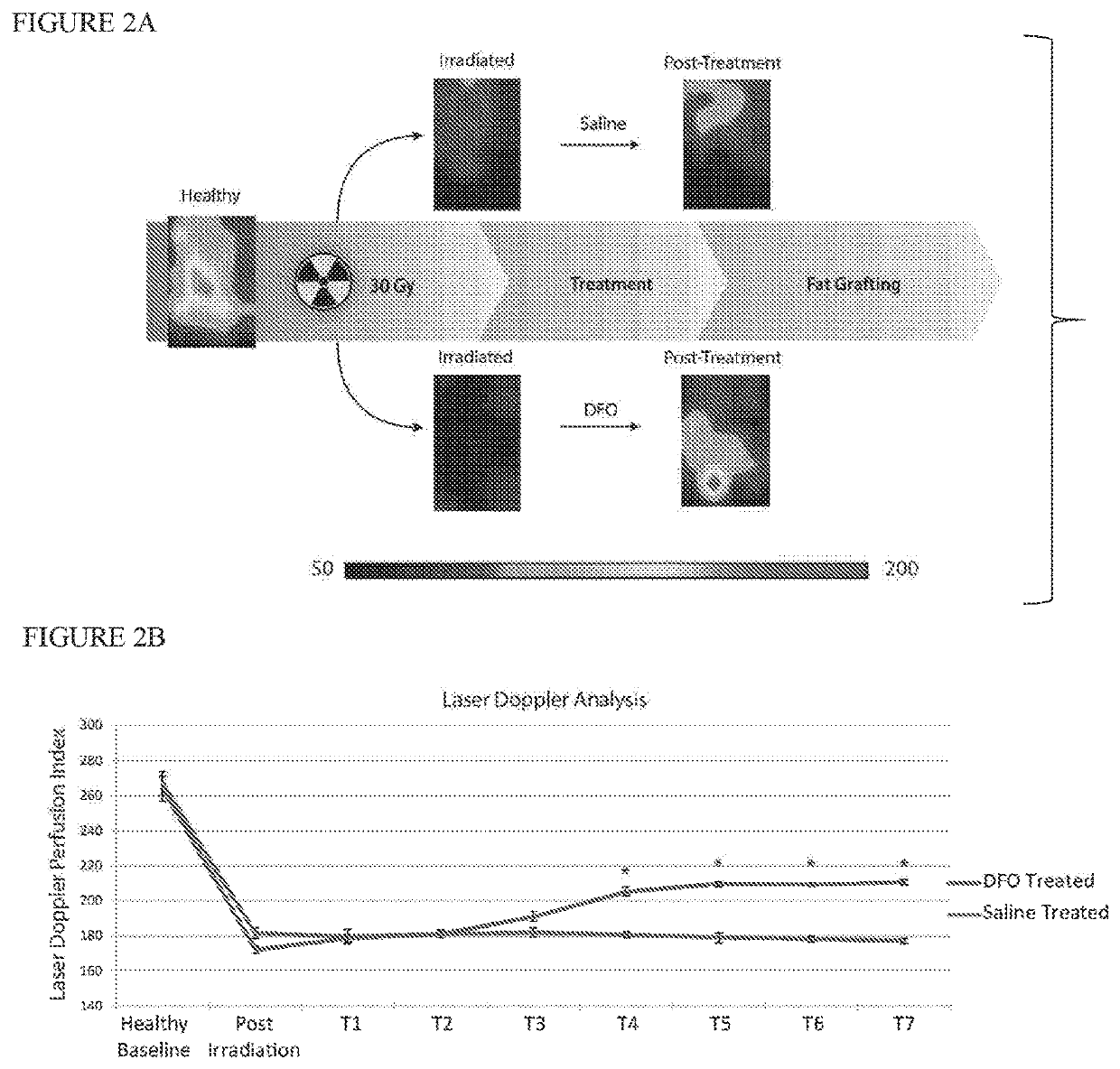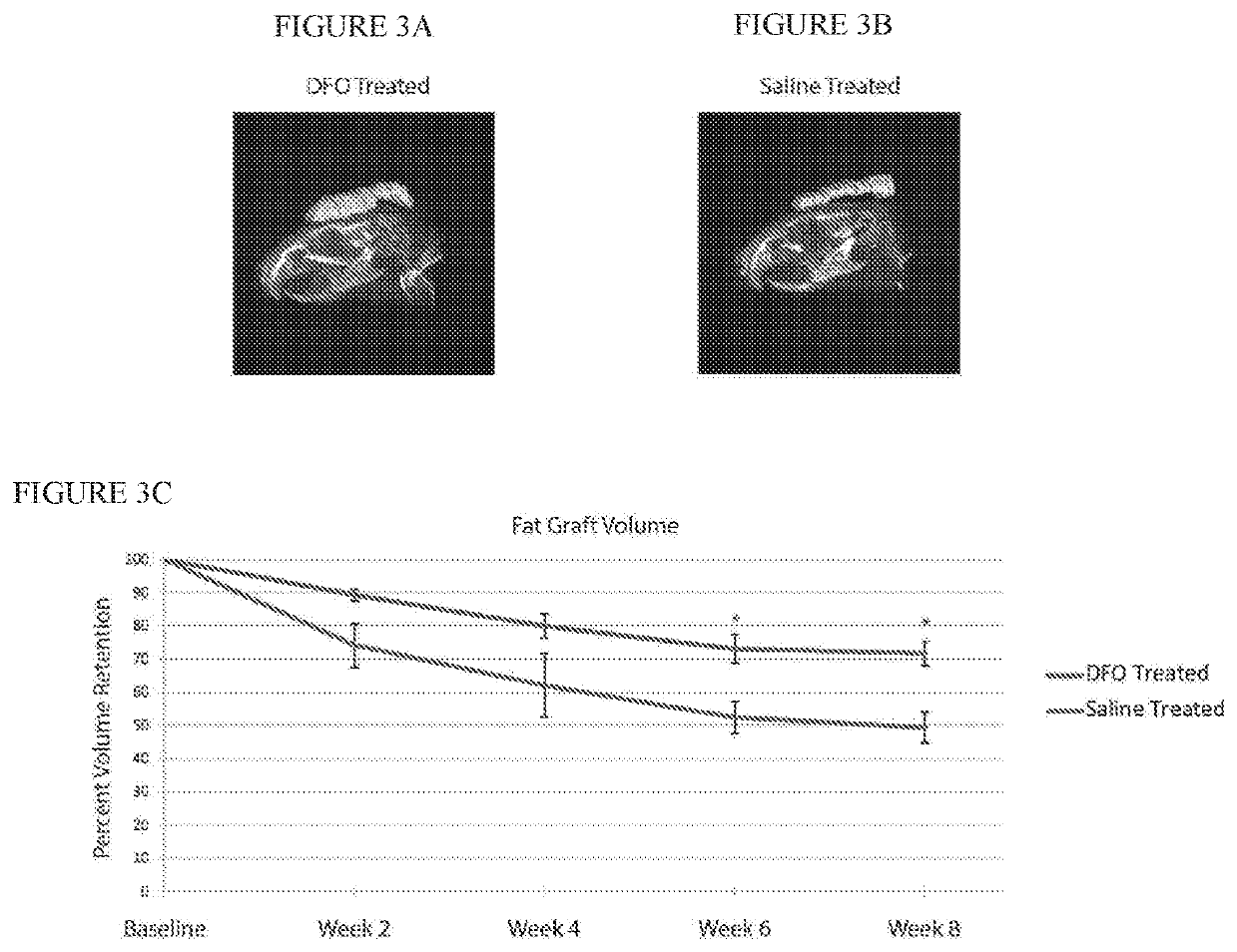Conditioning irradiated tissue for increasing vascularity
a technology of irradiated tissue and vascularity, which is applied in the field of conditioning irradiated tissue for increasing vascularity, can solve the problems of collateral damage to surrounding tissue, severe cosmetic and long-term functional impairment, and difficult reconstruction of damaged tissue, so as to reduce the stiffness of irradiated tissue
- Summary
- Abstract
- Description
- Claims
- Application Information
AI Technical Summary
Benefits of technology
Problems solved by technology
Method used
Image
Examples
example 1
[0043]Adult 60-day-old male Crl:NU-Fox1NU immunocompromised mice were used for experiments in this study. Twelve mice were treated with a total of 30 Gy external beam radiation, delivered as six fractionated doses of 5 Gy each over 12 days, followed by 5 weeks of recovery. An additional six non-irradiated mice were used as healthy controls for laser Doppler analysis (LDA) and skin analysis. Irradiated mice were divided into two treatment groups: a DFO experimental group and saline control group. Following recovery, mice underwent injection of either DFO (1 mg in 100 μl saline) or 100 μl of saline alone beneath the dermis every other day for a total of seven treatments. FIG. 1 shows a schematic of this irradiated scalp treatment.
[0044]After irradiation, fat grafting was performed on the irradiated mice. After informed consent was obtained, lipoaspirate was obtained from three healthy female donors, ages 45, 49 and 51, with no other medical co-morbidities under an approved IRB protoco...
example 2
[0056]Adult 60-day-old male Crl:NU-Fox1NU immunocompromised mice were used for experiments in this study. Twelve mice were treated with a total of 30 Gy external beam radiation, delivered as six fractionated doses of 5 Gy each every other day over 12 days, followed by one month of recovery. An additional six non-irradiated mice were used as healthy controls for laser Doppler analysis (LDA) and skin analysis. Irradiated mice were divided into two treatment groups: a DFO experimental group and a control group. Following recovery, the we applied to the irradiated scalp skin of the DFO experimental group a transdermal delivery system comprising a dry film having DFO at a concentration of 13.4% weight / weight % of film encapsulated in a reverse micelle with a non-ionic surfactant stabilized by polyvinylpyrrolidine (PVP) in an ethylcellulose matrix, cut into a ⅝ inch circle and covered by a silicon sheet of the same size. Identical transdermal delivery devices, but omitting the DFO, were a...
PUM
| Property | Measurement | Unit |
|---|---|---|
| weight | aaaaa | aaaaa |
| length | aaaaa | aaaaa |
| volume retention | aaaaa | aaaaa |
Abstract
Description
Claims
Application Information
 Login to View More
Login to View More - R&D
- Intellectual Property
- Life Sciences
- Materials
- Tech Scout
- Unparalleled Data Quality
- Higher Quality Content
- 60% Fewer Hallucinations
Browse by: Latest US Patents, China's latest patents, Technical Efficacy Thesaurus, Application Domain, Technology Topic, Popular Technical Reports.
© 2025 PatSnap. All rights reserved.Legal|Privacy policy|Modern Slavery Act Transparency Statement|Sitemap|About US| Contact US: help@patsnap.com



